April 2019
This website describes the last part of my one month Maldives trip to the north of the country (Haa Alif, Haa Dhaal, Shaviyani, Noonu, Lhaviyani and Alif Alif Atolls). The beginning of the report about this trip can be found here. At the end of the website a link leads to the next part of the report.
Hinnavaru
With the ferry “Concorde” I reached the island Hinnavaru in the Lhaviyani Atoll. It departs from Velidhoo to Male on Sundays at 9 p.m. and stops on the way in Hinnavaru. It is the only ferry connection between Noonu and Lhaviayani Atoll. Since these atolls are not touristy, the fare is modest and quoted in the Maldivian currency Ruffiya, in contrast to the overpriced USD ferry fares in the tourist parts of the Maldives. The ferry “Concorde” even offers thin mattresses for the night trip to Male.
Hinnavaru is about 850 meters long and has 4’000 inhabitants.
The harbor

Colorful houses on Hinnavaru

Varu Inn
When I reached Hinnavaru shortly after 10:30 p.m., the people from my guesthouse Varu Inn were already waiting at the harbor. It was the most expensive guesthouse on my trip, but since it was also the only accommodation on Hinnavaru, I had no other choice. The photos looked good on the website and as the price was high I was looking forward to my stay. The owner told me before the booking that Hinnavaru Island had a big reef. The guesthouse also offered various excursions such as fishing, wreck snorkeling or visiting a sandbank. After a short walk we reached the Varu Inn. Most of the rooms were occupied by a group of Belarusian divers, so I got a room on the top floor. The room was fine, but the whole floor was a dirty construction site. Contrary to the agreement there was no table in the room and the internet reception only worked on the lowest floor at the reception. After nobody brought me a table on the room despite reminders, I carried a table from the ground floor into my room in the uppermost floor by myself. To get to the reef I had to climb over big stones and wade through sharp seaweeds. The reef was small, so that I had explored it after one hour.
I only saw this yellow boxfish on Hinnavaru. Otherwise the house reef was small and nothing special.

The next day I wanted to go snorkeling with the divers as promised. The price of this trip was now suddenly USD 35 instead of the USD 17 I was told at the time of booking. In the morning of the trip the divemaster informed me that this excursion was not suitable for snorkelers and therefore I could not go with them. So I asked about the advertised tours like fishing, wreck snorkeling or visiting a sandbank. But these could not take place, because the only boat was already used by the divers. My stay in the Varu Inn was a big disappointment. I had no internet in my room, was on a floor that resembled a construction site, the reef was nothing special and the excursions were suddenly more expensive and were not carried out anyway. It could not be that this accommodation was the most expensive of my Maldives trip and asked for a price reduction as Varu Inn did not keep the promises but the owner stayed with his price. So I left after three nights. The bad impression was rounded off by an employee who didn’t show up in time to transport the luggage to the port and I had to carry it to the port together with a Belarusian so that I wouldn’t miss the boat. Since I was angry, I mention this guesthouse here on the website by its name.
The Belarusians were satisfied with the diving. Unfortunately they already drank the smuggled alcohol empty on the first evening. They told me that Russian forums mentioned tips on how to bring alcohol undetected to the Maldives, for example in empty shower containers. A particularly creative trick is to soak a lady’s tampon full of alcohol.
The local ferry brought me in about two hours to my next destination, the island Kurendhoo, which is also located in the Lhaviyani Atoll.
Kurendhoo
On the about 650 meters long island I was the only tourist and the first guest in the new and only guesthouse on the island. Here I was really off the beaten track.
During the sunset walk these teenagers wanted to make selfies with me. In return I was allowed to photograph them.
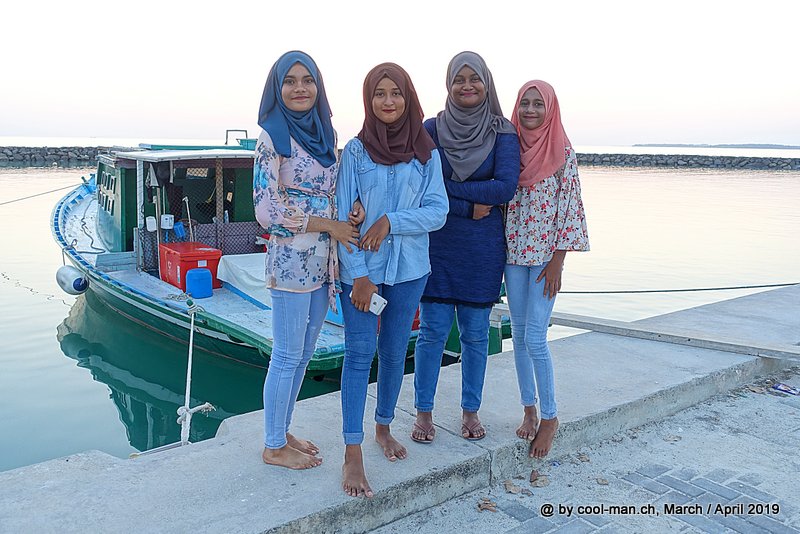
Some people worked at the shipyard where a few large ships were built and repaired.

In the evening the families sat in front of their house and watched the people strolling by.
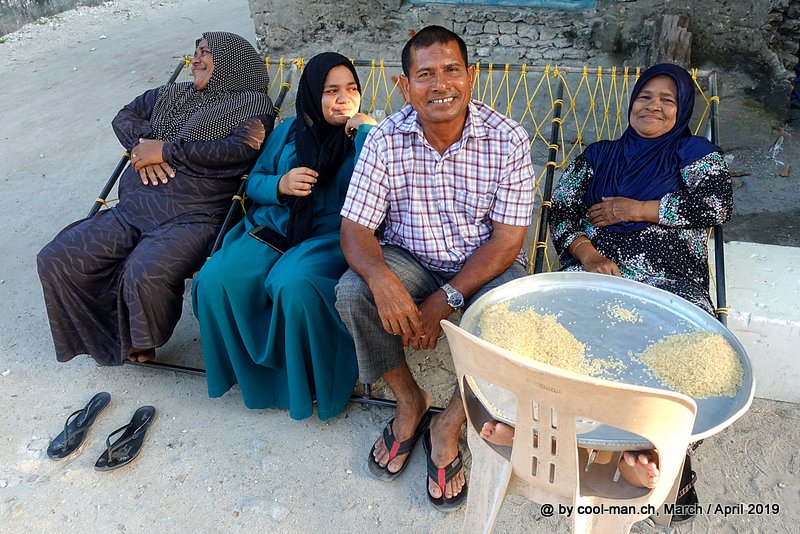
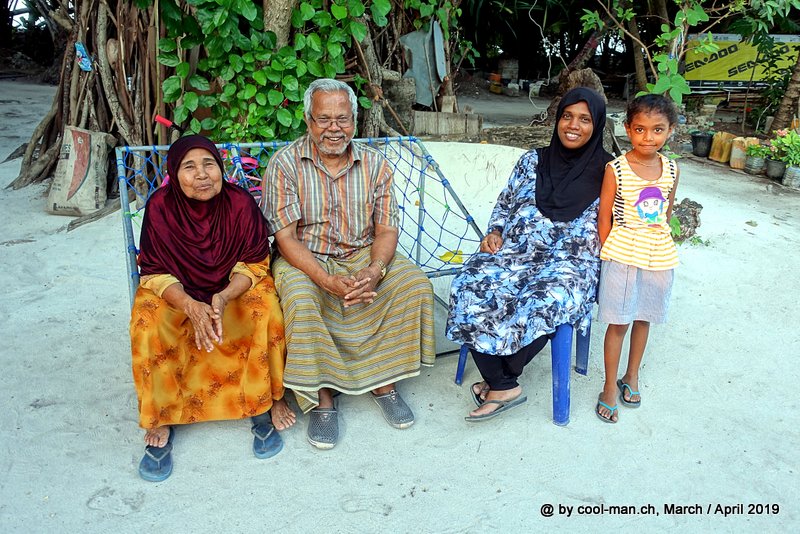
The power station on the island where my host worked.
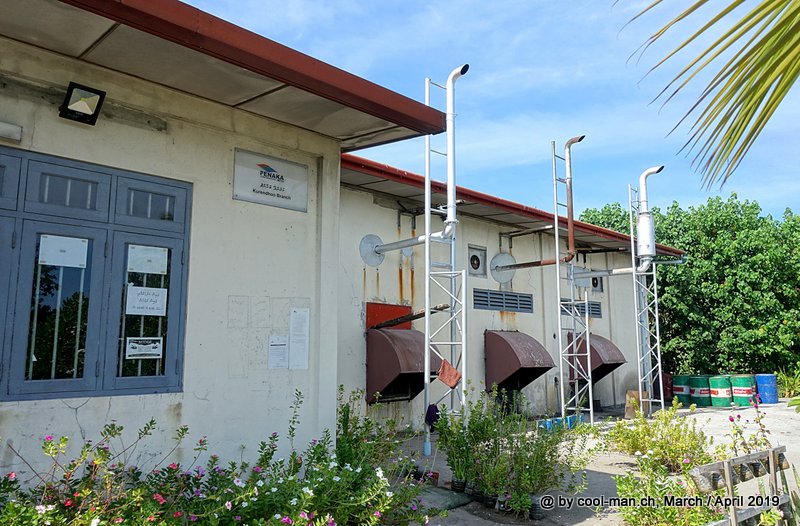
In addition to diesel generators, solar collectors were also in operation, which were monitored on this screen.
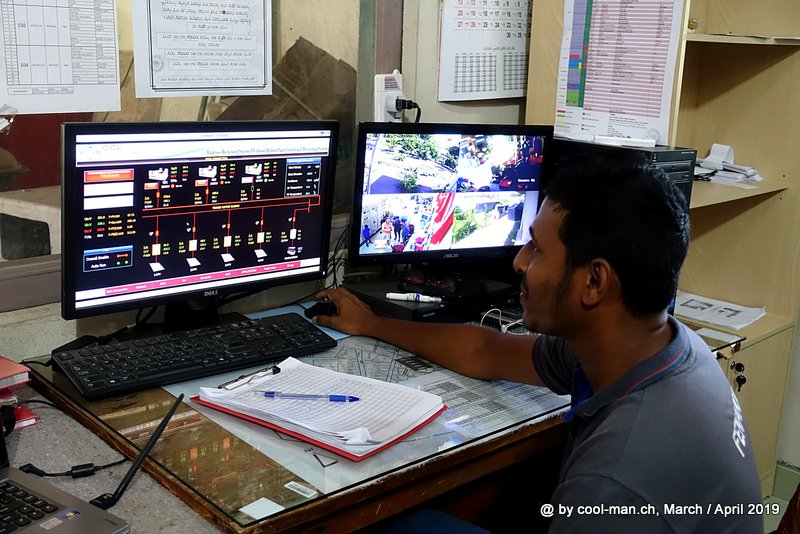
On Friday, the weekend, various groups such as these Boy Scouts offered cup cakes to improve their funds.
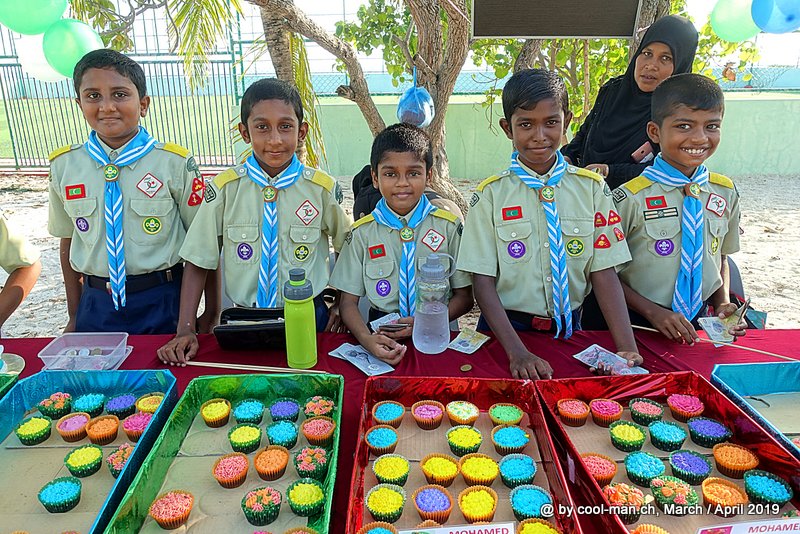
This girl brought some cup cakes to her family.

As there are hardly any tourists visiting the island, the three restaurants are oriented to the needs of the locals. Although the sea around the island is full of fish, there was no fresh fish on the menu. In addition, there were only a few standard dishes such as noodles or rice with canned tuna on offer on all the islands in the north. With time I learned to order fresh fried fish with vegetables for dinner at the restaurant already in the morning. One restaurant forgot my order, so that I had to eat the monotonous standard menu in another restaurant at short notice.
Kurendhoo has no house reef, Thus, I went with Shamoon, a companion that the owner of the guesthouse arranged for me, with a small boat to the neighboring island Lhohi 1 km away. The reef of Lhohi stretches around the whole island.
Crystal clear water
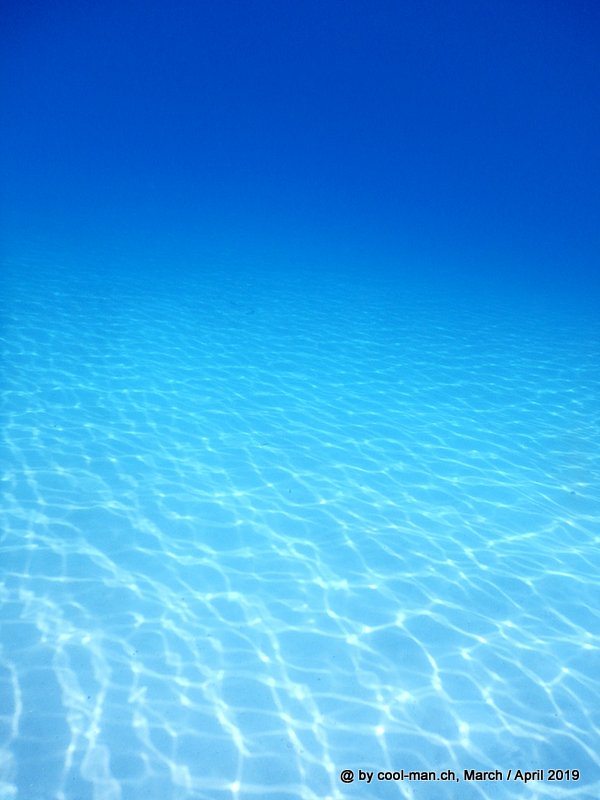
A Mottled Linckia star fish
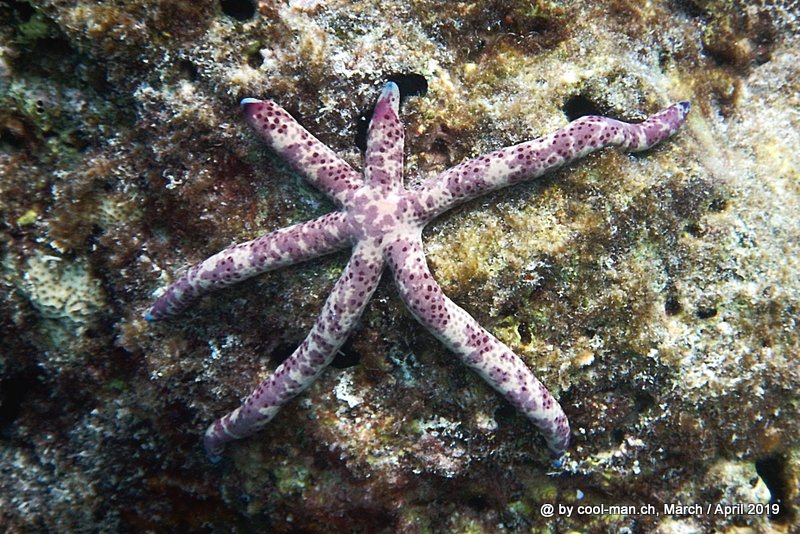
The yellow structures are the tentacles of Spiral gilled tube worms or Christmas tree worms.
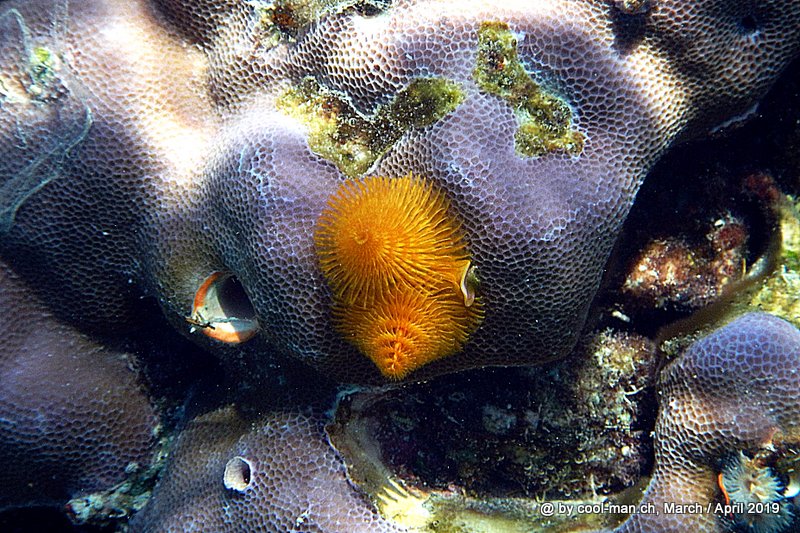
An Empress Angelfish

Reef sharks like this blacktip reef shark are normally harmless. This shark swam directly towards me and changed its direction only shortly before me. I suddenly did not see my guide Shamoon anymore, because he hid behind me from the shark. On land he told me that reef sharks have already attacked locals and bitten their legs. The victims survived, but were in hospital for a long time.
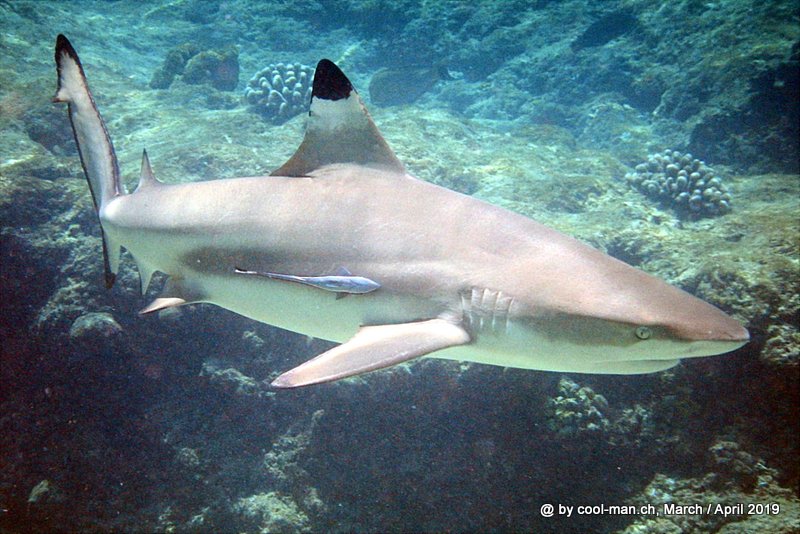
The reef around Lhohi Island was varied and the visibility partly very good. Some reef fish appeared in larger shoals. I also saw turtles.
On the second day we went by a small boat to a place between the neighboring islands Lhohi and Lhossalafushi, where we met some sharks, turtles, mackerels and snappers.
In the shore area of Lhossalafushi Island, 2.5 km away from Kurendhoo, we found several Whitetail Stingrays.

The owner of the guesthouse assured me before the booking that I could travel further south to the island of Kashidhoo by speedboat from Kurendhoo. But that was not the case. The only connection to the south was to Male. I was told that the next day I could take a speedboat to the capital. After I decided to go for it, I received no confirmation for a long time and finally the message that the speedboat was fully booked. This annoyed me, because the guesthouse had perhaps not forwarded the speedboat booking fast enough to the boat owner. Only now the people revealed to me that on the same day a much cheaper night ferry chugged to Male. I gladly accepted the offer. The boat “Winter” departs weekly Fridays at 9 p.m. from Kurendhoo to Male. It was well occupied. Of course, I was the only westerner. That this was not a tourist boat was also shown by the price of the equivalent of 7 CHF/USD, which was the same for locals and tourists. However, one had to accept compromises in comfort, because there were no thin mattresses like on the ship “Concorde” here. I slept on deck on my bath towel. At first I thought that I would spend a terrible night, but it became an impressive trip. The starry sky spread over me. Jupiter and Saturn initially appeared on the horizon and wandered across the firmament during the night. Unforgettable!
The ferry “Winter” entering the harbor of Kurendhoo
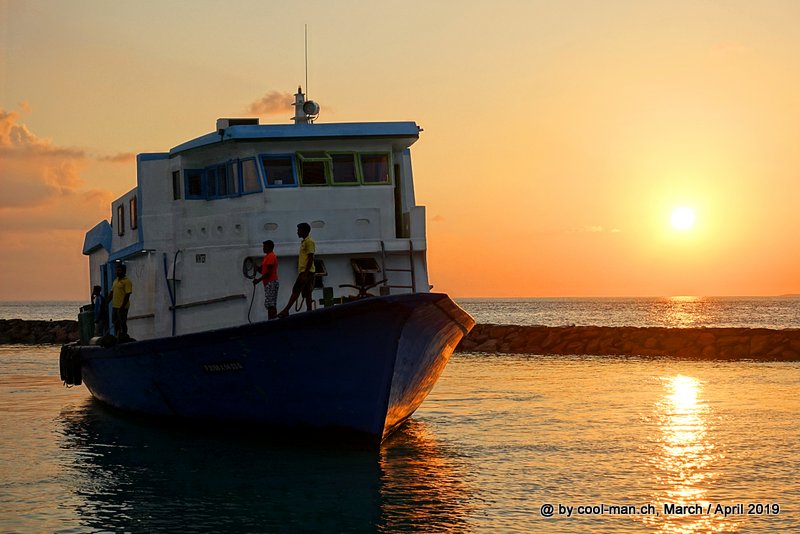
Shortly before 6 in the morning I reached Male. After a breakfast at the buffet of the recommendable Sea House Café I took the speedboat at 11 a.m. to my last destination on the Maldives, the island Thoddoo, 67 km away from Male in the Alif Alif Atoll.
Thoddoo
Here I was again in the tourist area, where foreign visitors pay three times more for the boat than locals and all prices on the island are in USD.
At the end of my Maldives trip I stayed 6 days on this island. Ivana’s sailing trip was over, so she also came to Thoddoo.
A typical alley
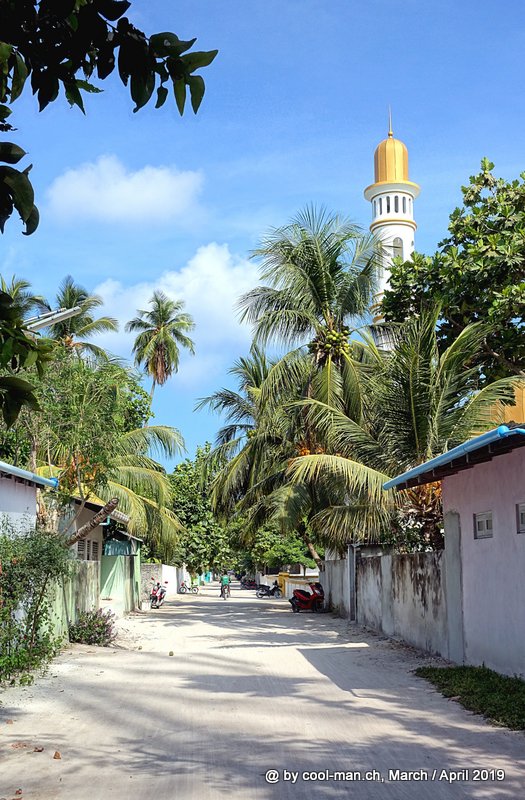
The 1.5 km long and slightly more than 1 km wide island is the largest fruit producer in the country. In April the Papayas were ripe. Watermelons are also grown on a large scale.
A papaya plantation
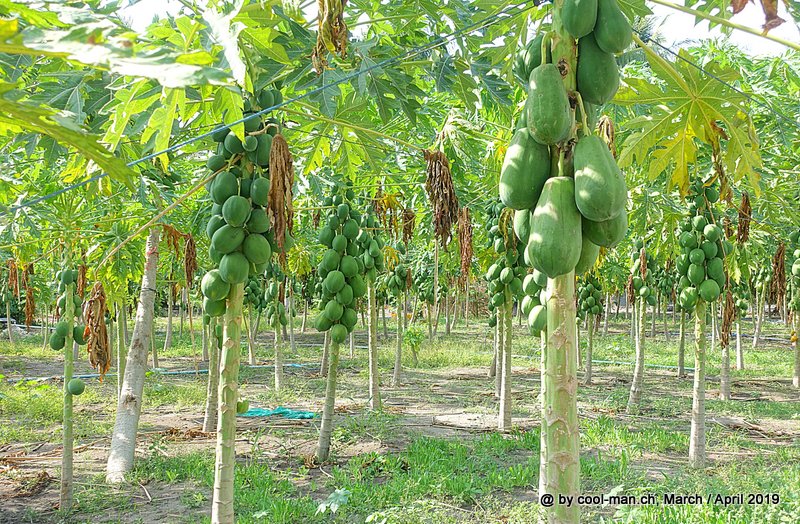
An Oriental Garden Lizard

On this island you could enjoy the sunsets from the beach again.
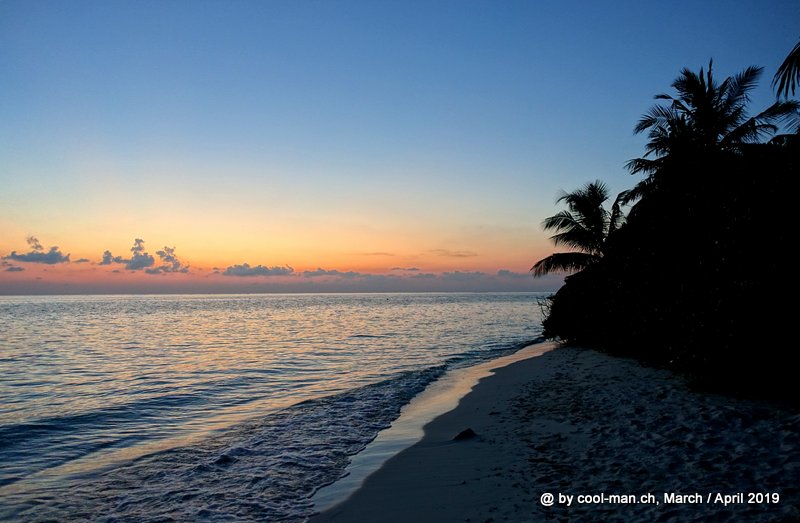
My guest house on Thoddoo was special. The owner and his friend and employee took much more care of the female guests (especially the solo travelers) and gave them benefits that were not available to me as a man, which I found to be unprofessional.
The island has two bikini beaches. The main beach (Thoddoo Guest Beach) was in the southwest, where extensive coral fields were to be found. A smaller one (Thoddoo Guest Beach Two) was located in the northeast of the island, where the sea was shallow and therefore smaller fish could be observed.
Snorkeling at Thoddoo Guest Beach Two
A male of a Green Bird Wrasse
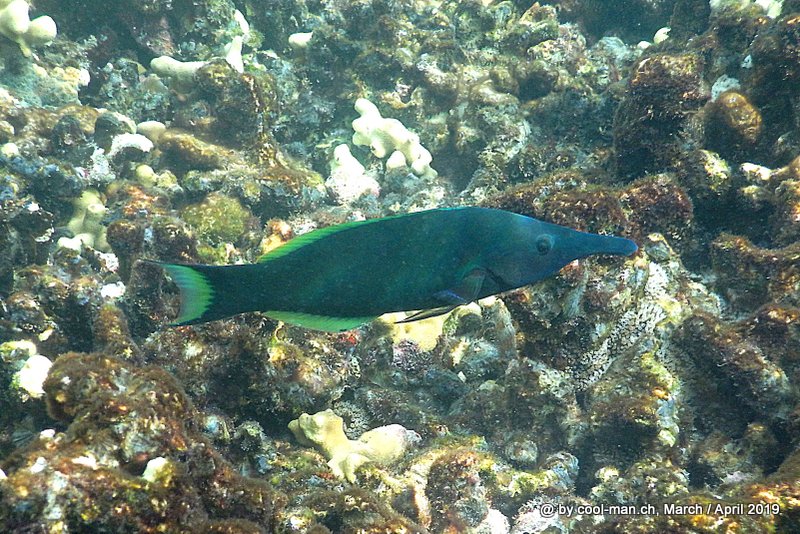
…and here the female
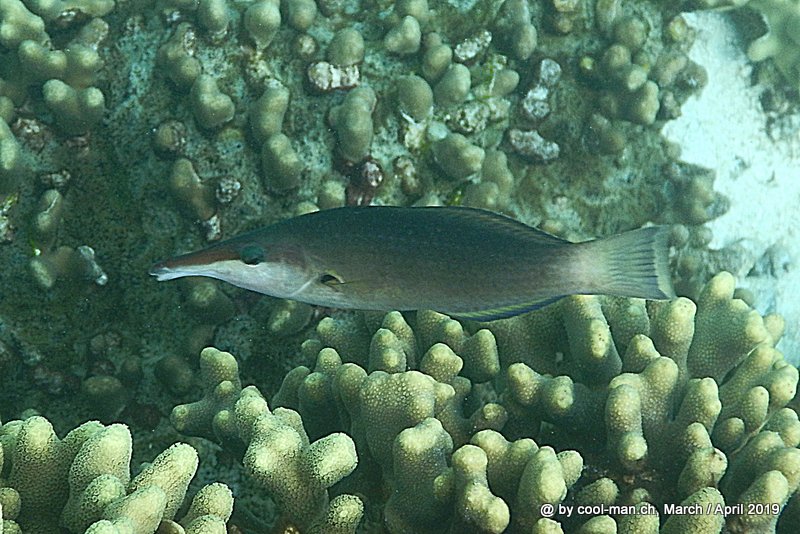
A Blacktail Grubfish
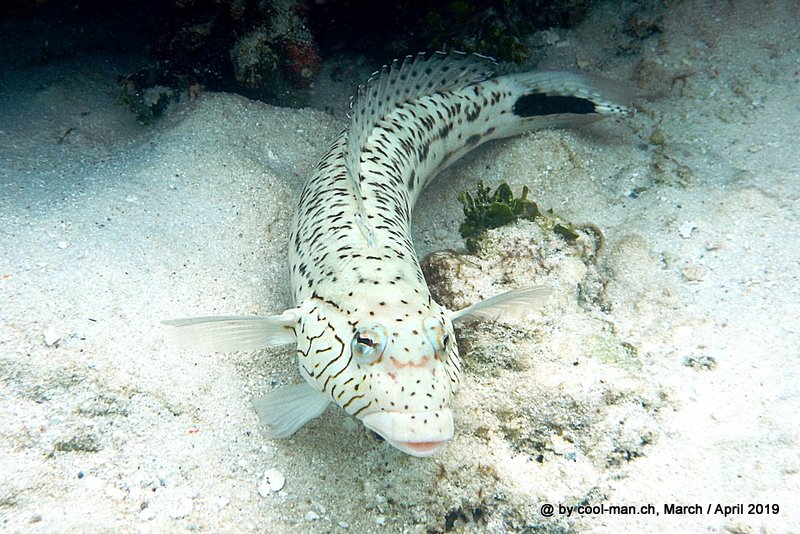
A Four Saddle Grouper
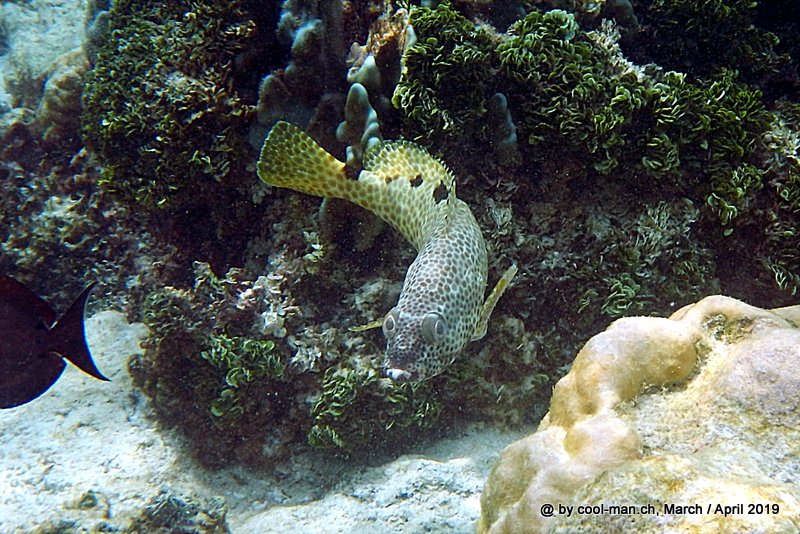
A juvenile Sharpnose Pufferfish
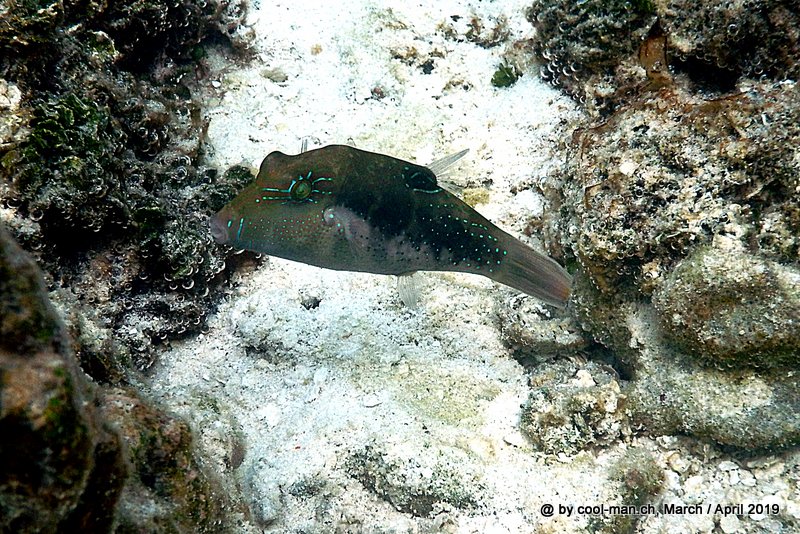
A Convict Surgeonfish
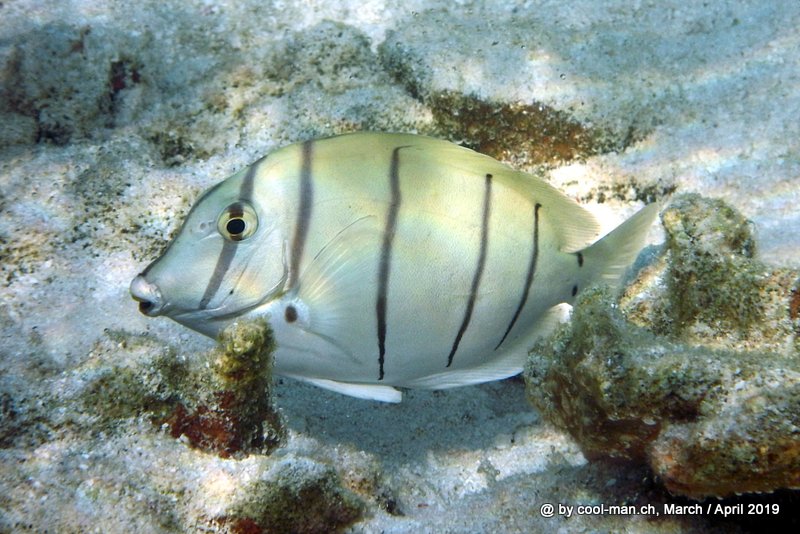
A juvenile Onespot Damselfish
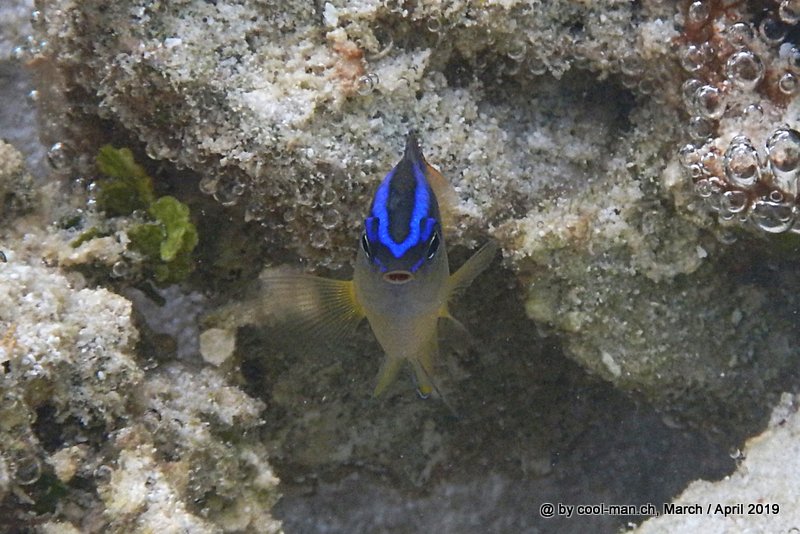
A Slingjaw Wrasse with a Bluestreak Cleaner Wrasse

Snorkeling at Thoddoo Guest Beach
This beach offered an above average snorkeling experience. I saw turtles every time, but also many not so common sea creatures, as the following pictures show.
Crescent Moon Butterflyfish, also called Raccoon Butterflyfish

A Queen Rainbow-Wrasse
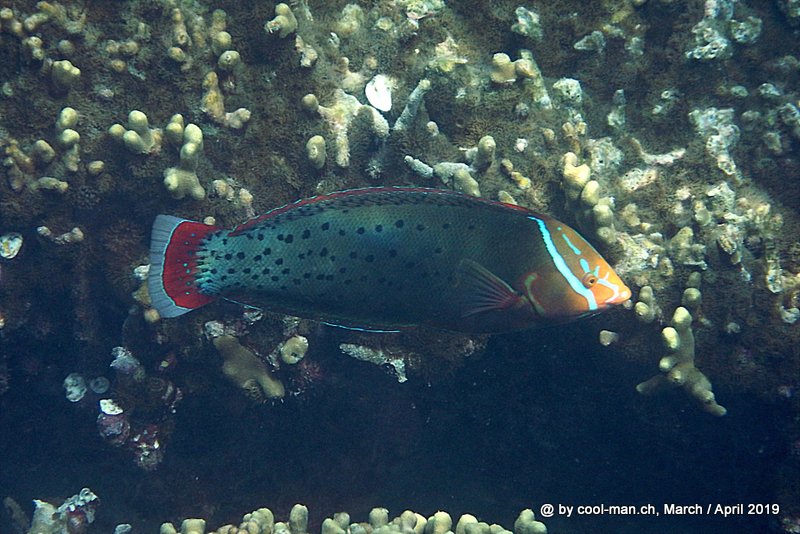
A Koran Angelfish or Semicircle Angelfish. I only met this kind of fish on Thoddoo. The name of the fish is supposed to refer to a specimen on a fish market in Zanzibar, on whose tail fin one believed to have recognized Koran verses on both sides. The fish became very valuable and the species is now called Koran Angelfish.
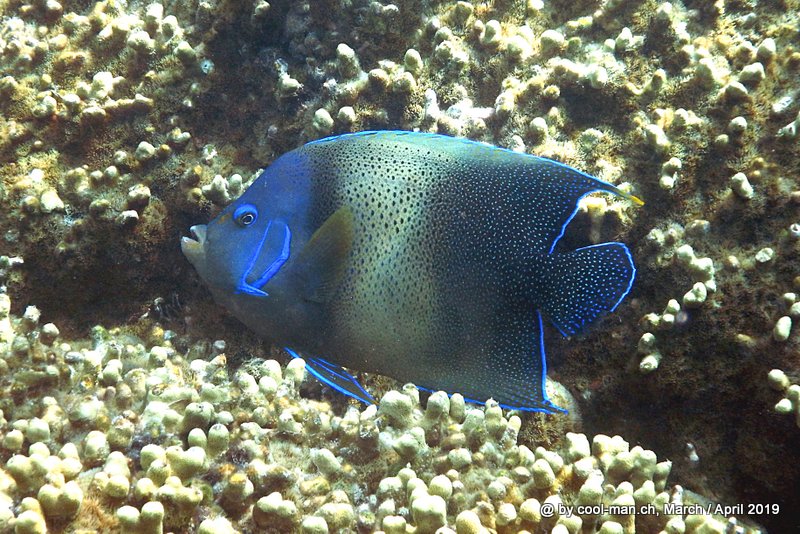
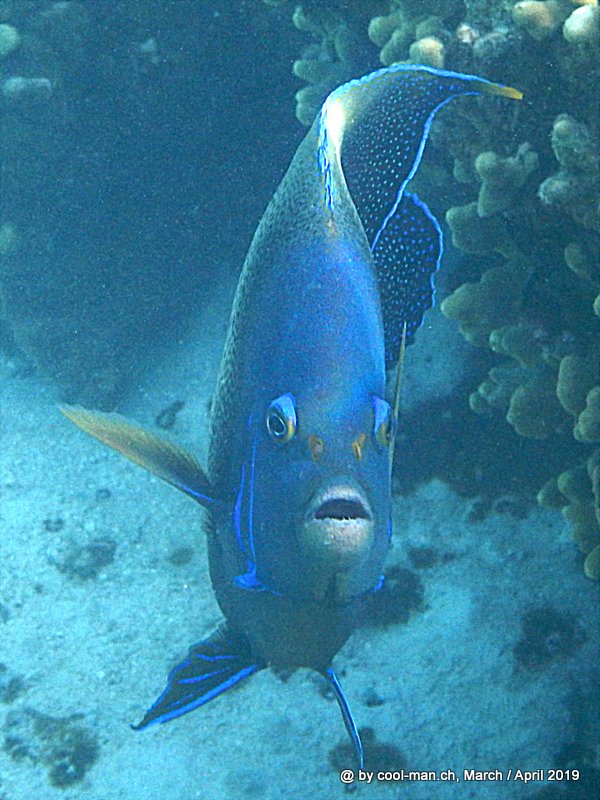
While observing the Koran Angelfish this Hawksbill Sea Turtle appeared.
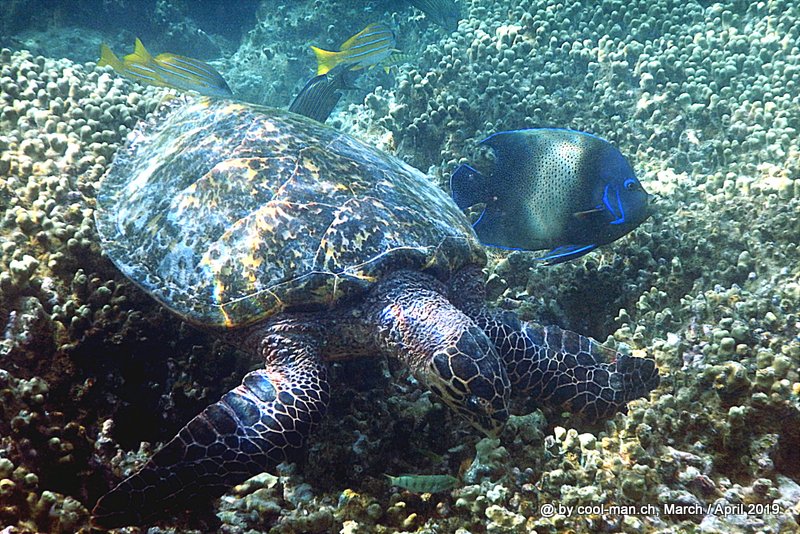
A Spotted Unicornfish

I hardly saw any Scribbled Leatherjacket Filefishes, also called Scrawled Filefish, on the Maldives, but on this reef they were common.

A Guineafowl Pufferfish
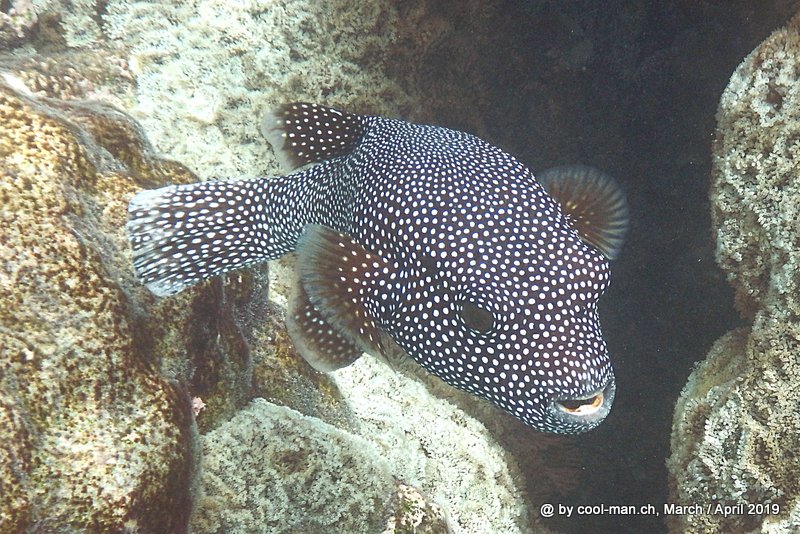
A Four Saddle Grouper
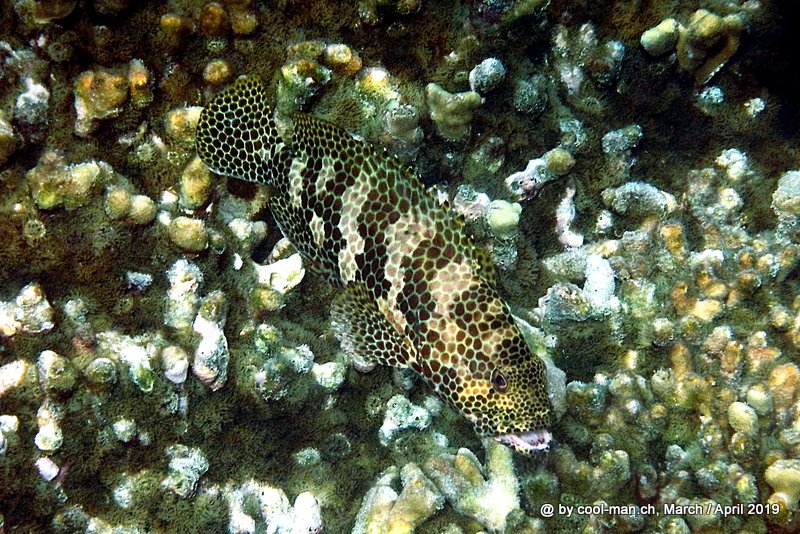
A Lined Surgeonfish

…and here from the front

On the left a Lined Surgeonfish, on the right an Orange-spine Unicornfish
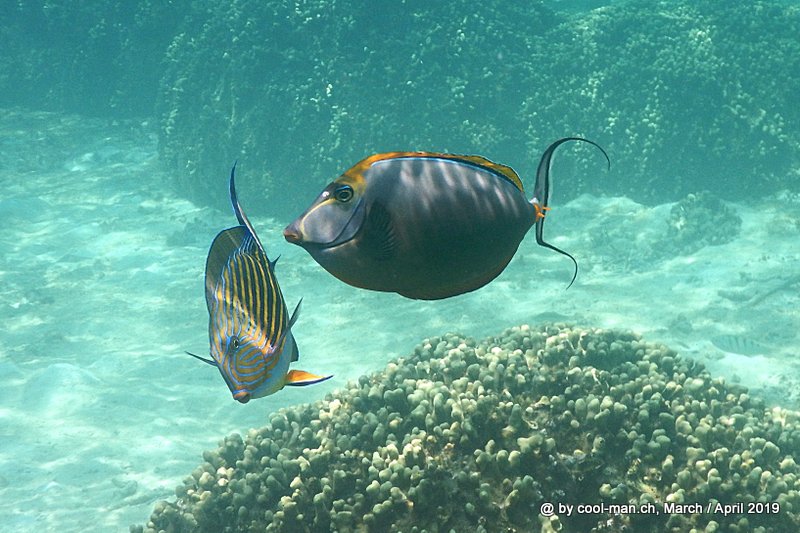
A Sixbar Wrasse
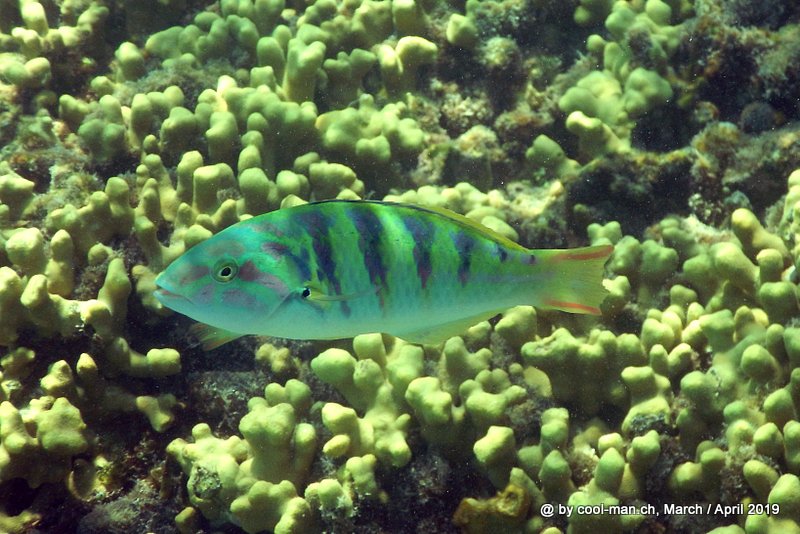
… and from the front
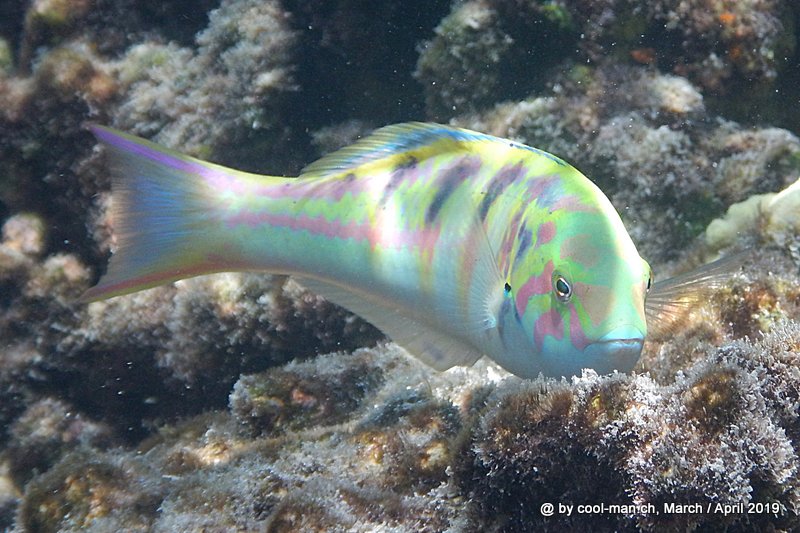
A lobster

Hawksbill Sea Turtles were common on this reef.
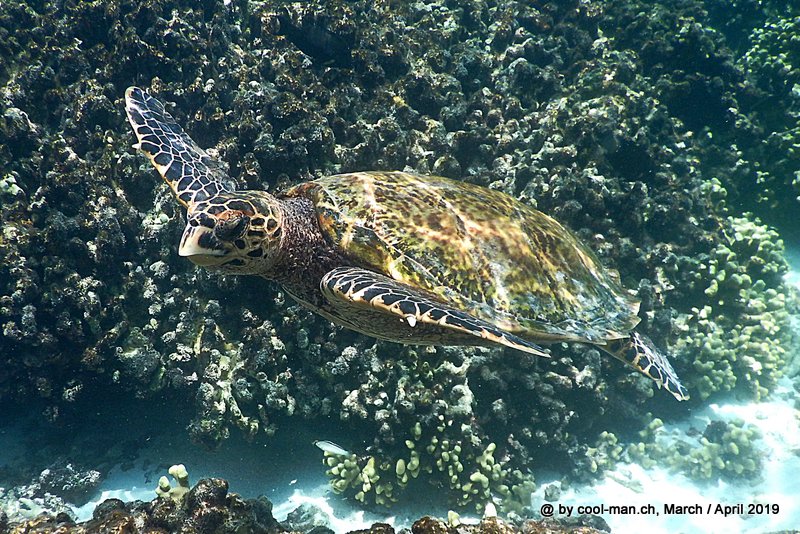
Sometimes I could approach them within a few inches.
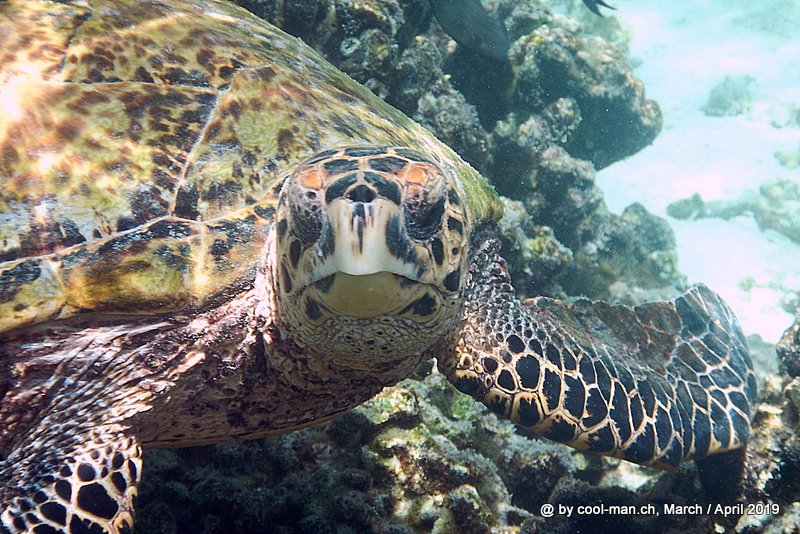
This was the end of my second month-long trip to the Maldives this year. After a short stay in Sri Lanka at the time of the bombings, my 2018/2019 winter trip came to an end. There were again unforgettable seven months in which I visited Tonga, Australia, Thailand, Cambodia, the North and South Ari Atolls of the Maldives, Sri Lanka and the northern part of the Maldives.
This text is an automatic English translation from the German original by deepl.com